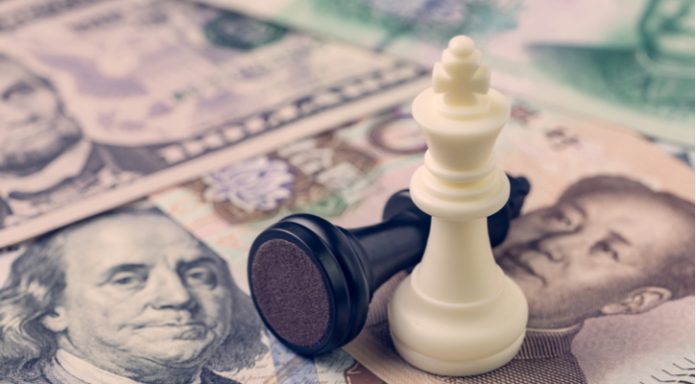The British pound was higher against the Australian dollar on Friday.
- Donald Trump bans US transactions with TikTok & WeChat
- United States sanctions Hong Kong leader Carrie Lam
- Aussie dollar drops after US non-farm payrolls tops expectations
- Ramsden says BOE not ‘actively planning’ negative rates but ‘in the toolbox’
GBP/AUD was up by 20 pips (+0.11%) to 1.8180 as of 3pm GMT. The pound-Aussie dollar exchange rate is lower by 0.75% this week.
Movement was sparse in the currency pair on Friday, with it trading in a 60-pip sideways range between 1.184 to highs just above 1.82. Yesterday it dropped -0.34%.
GBP: Pound rebounds after 3-day losing streak
The pound stabilised on Friday having dropped the prior three days versus the Australian dollar. Having had a strong start to the week, it is on course to close the week down ¾ of a percent.
The focus for forex traders was stateside with new tensions arising between the US and China as well as the release of the monthly US unemployment report for July.
The BOE’s Dave Ramsden doubled down on the Bank of England’s ‘not now but maybe later’ approach to negative interest rates. Ramsden repeated the line from Governor Andrew Bailey that negative rates are “in the toolbox” but also said ‘we are not actively planning for negative rates.’
AUD: Double dose of US China escalations
A new executive order from US President Trump banned any US transactions with TikTok and WeChat, the mobile applications owned by ByteDance and Tencent respectively. The ban was made on national security grounds amid data protection concerns. The order takes effect in 45 days. Later in the afternoon it was announced more top Chinese officials including the leader of Hong Kong Carrie Lam would be sanctioned by the US.
The Aussie dollar tends to suffer when tensions brew between the US and China, Australia’s min trading partner.
China has has already banned the applications of major US internet companies including Facebook and Twitter for years.
The US dollar jumped after non-farm payrolls topped expectations with 1.76 new American jobs created in July. The move up in the dollar pulled down the Aussie dollar more than the pound.





